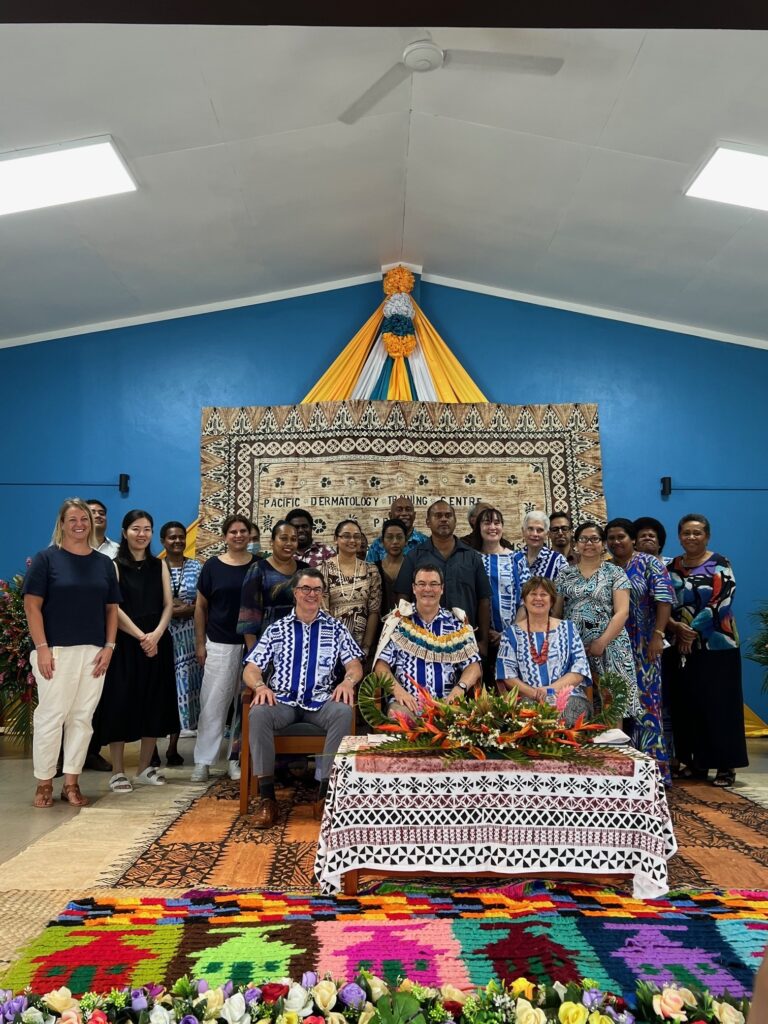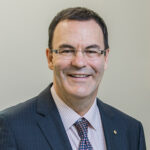
Aussie dermatologists and the ILDS are collaborating to expand dermatological care across the Pacific region.
The southwest Pacific Island Nations are home to more than 10 million people, spread across vast and remote geographical areas.
These widely dispersed communities face significant healthcare challenges because of the limited infrastructure and fragile health systems.
Skin diseases are highly prevalent, with approximately 50% of Fiji’s school children suffering from scabies or impetigo, it has previously been reported in PLoS Neglected Tropical Diseases. Other neglected tropical diseases, including leprosy, chromoblastomycosis, and lymphatic filariasis, are endemic to the region.
Recognising the urgent need for dermatological expertise, Australian dermatologist Associate Professor Margot Whitfeld, co-founder of the not-for-profit organisation Pacific Dermatology Ltd, and Fiji’s then only dermatologist Dr Mecuisela Tuicakau collaborated to establish the Pacific Dermatology Training Centre (PDTC) in Fiji.
Since opening its doors in 2016, the PDTC has focused on increasing access to dermatological care across the Pacific Islands.
The PDTC follows a model pioneered in East Africa with the successful establishment of the Regional Dermatology Training Centre in Moshi, Tanzania. Its approach is built on three core principles:
- Collaborative support: A broad network of stakeholders contributes to the development and refinement of training and care to ensure regional relevance.
- Regional accessibility: Training and care services extend beyond Fiji, benefiting other nations in the Pacific.
- Utilisation of local expertise: The PDTC prioritises using existing regional expertise wherever possible.
A key objective of the PDTC is to increase the availability of ‘home-grown’ dermatological professionals. To achieve this, the centre offers a one-year postgraduate diploma from the Fiji National University (FNU), alongside a three-year Masters’ program for medical degree holders.
These programs have already made a meaningful impact by improving the diagnosis and treatment of dermatological and tropical skin diseases. They have also enhanced data collection on both communicable and non-communicable diseases and strengthened regional health emergency responses.
In addition to its educational program, the PDTC supports the National Skin Clinic at Suva’s Tamavua Twomey Hospital. Trainees enrolled in both the Diploma and Masters’ programs gain invaluable hands-on experience, providing dermatological care to over 21,000 patients annually.
Operating an initiative of this scale requires substantial financial investment so the International League of Dermatological Societies (ILDS), of which I am treasurer, announced a landmark commitment of US$1 million over four years in 2024.
Inspired by its previous successful investment in Tanzania’s Regional Dermatology Training Centre, the ILDS expects its support for the PDTC to facilitate the expansion of both the PDTC’s Diploma and Masters’ program, as well as increasing its patient care capacity in the years ahead.
During my visit to visit to the PDTC late last year, when I represented the ILDS for the official announcement of the four-year funding agreement, it was inspiring to see the PDTC and the clinic at the Tamavua Twomey Hospital in full operation, with the dermatology regional trainees and two additional visiting faculty from Australia participating and the hospital inpatient teaching rounds.
Meanwhile, a range of new initiatives are planned for this year and April 2026 will see the first of the likely annual continuing medical educational meetings held in Fiji.
These will bring together students, graduates, the faculty, and other interested colleagues and academics, and governments representatives, to learn, strategise, and network to continue the improvement in the delivery of dermatological care to the Pacific.

Associate Professor Stephen Shumack and the team behind the initiative.
During the next four years, thanks to the continuing dedication of our colleagues Associate Professor Whitfeld, Dr Tuicakau, the Board of Pacific Dermatology Ltd, the FNU, the ministries of health of the Pacific island nations, the visiting faculty members, other stakeholders, and financial backing from the ILDS, I’m looking forward to watching the PDTC as a transformative force in Pacific Nations dermatology, empowering local medical professionals and improving care for communities that need it most.
ILDS: Advancing global dermatology and how you can help
The ILDS plays a pivotal role in global dermatological advocacy and development, and I’ve served on its board for five years. Representing more than 200 societies from 104 countries, including the Australasian College of Dermatologists, the ILDS is the only international dermatological society which has an official relationship with the World Health Organization (WHO).
Through this unique position, we champion the inclusion of skin health as a priority in global health policies at the highest levels.
Our initiatives continue to expand, encompassing:
- Grant programs: supporting individuals and associations to improve dermatological care in underserved communities worldwide.
- Education and training: running tailored programs designed to meet the needs of doctors and healthcare professionals in under-resourced areas.
- World-class events: hosting the World Congress of Dermatology (WCD), one of the largest dermatology conferences globally, every four years. We also host the exclusive World Skin Summit for ILDS members every four years.
- Regional support initiatives: funding and supporting significant projects, such as the PDTC to strengthen dermatological care in under-served communities.
- Other projects: including ‘Grand Challenges in Global Skin Health’ and ‘Global Partnerships for Education and Care’, which foster mutual learning partnerships between organisations and strengthen expertise to address the significant burden of skin diseases worldwide.
I’m sure any Australian colleague with, or without their registrar, who is keen to assist with teaching, education and assisting in the operations of the PDTC would be most welcome.
I’m proud to say that more than 40 Australian colleagues have already contributed to the project.
If you’d like to know more about the PDTC and how to get involved, please contact Mr Parwan Baral, Project Manager, Pacific Dermatology Ltd, by email at pawan@pacificdermatology.org.au
Associate Professor Stephen Shumack OAM FACD is a board member and treasurer of the International League of Dermatological Societies, a past president of the Australasian College of Dermatologists, and a staff specialist at the Royal North Shore Hospital in Sydney.

